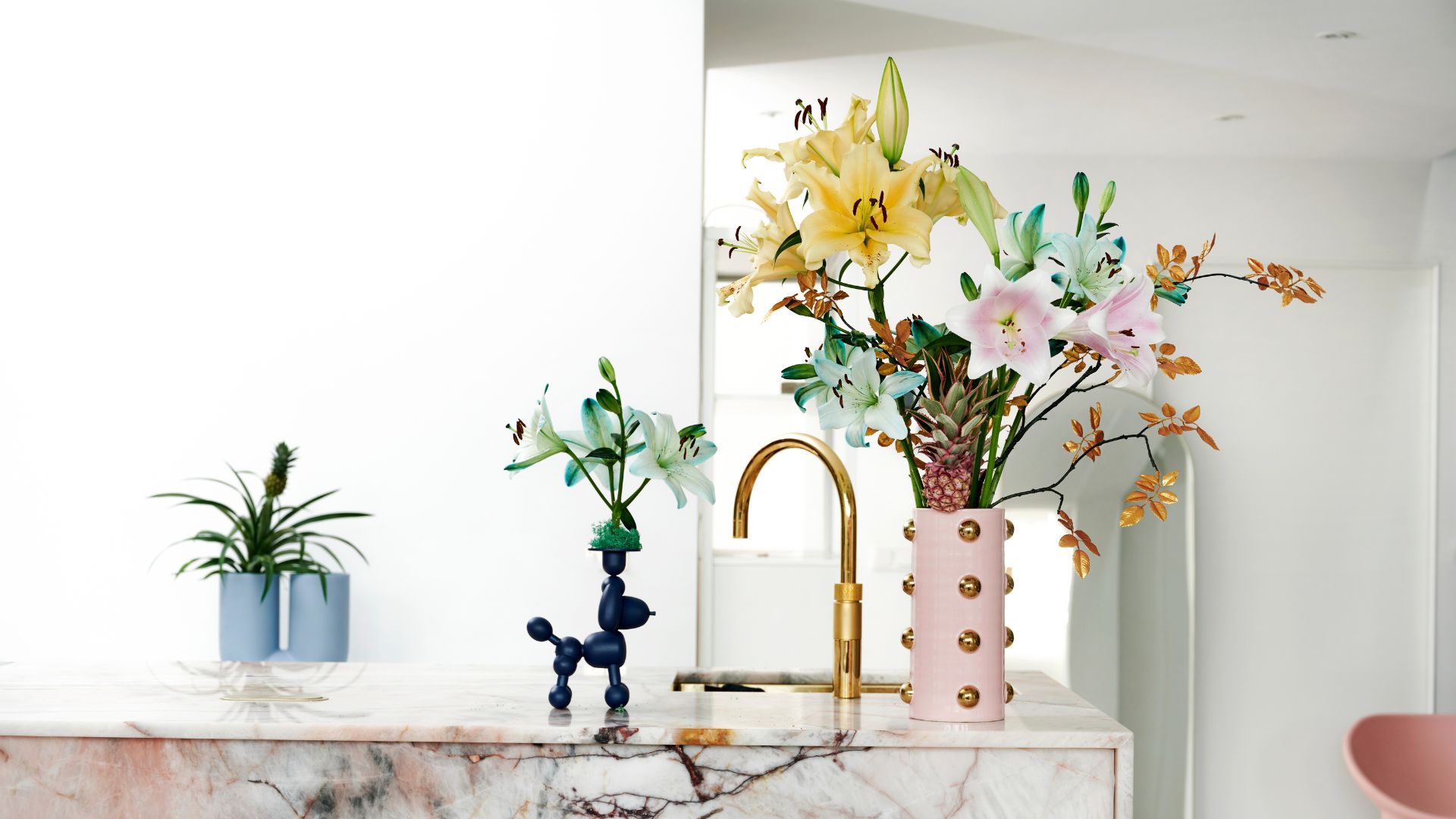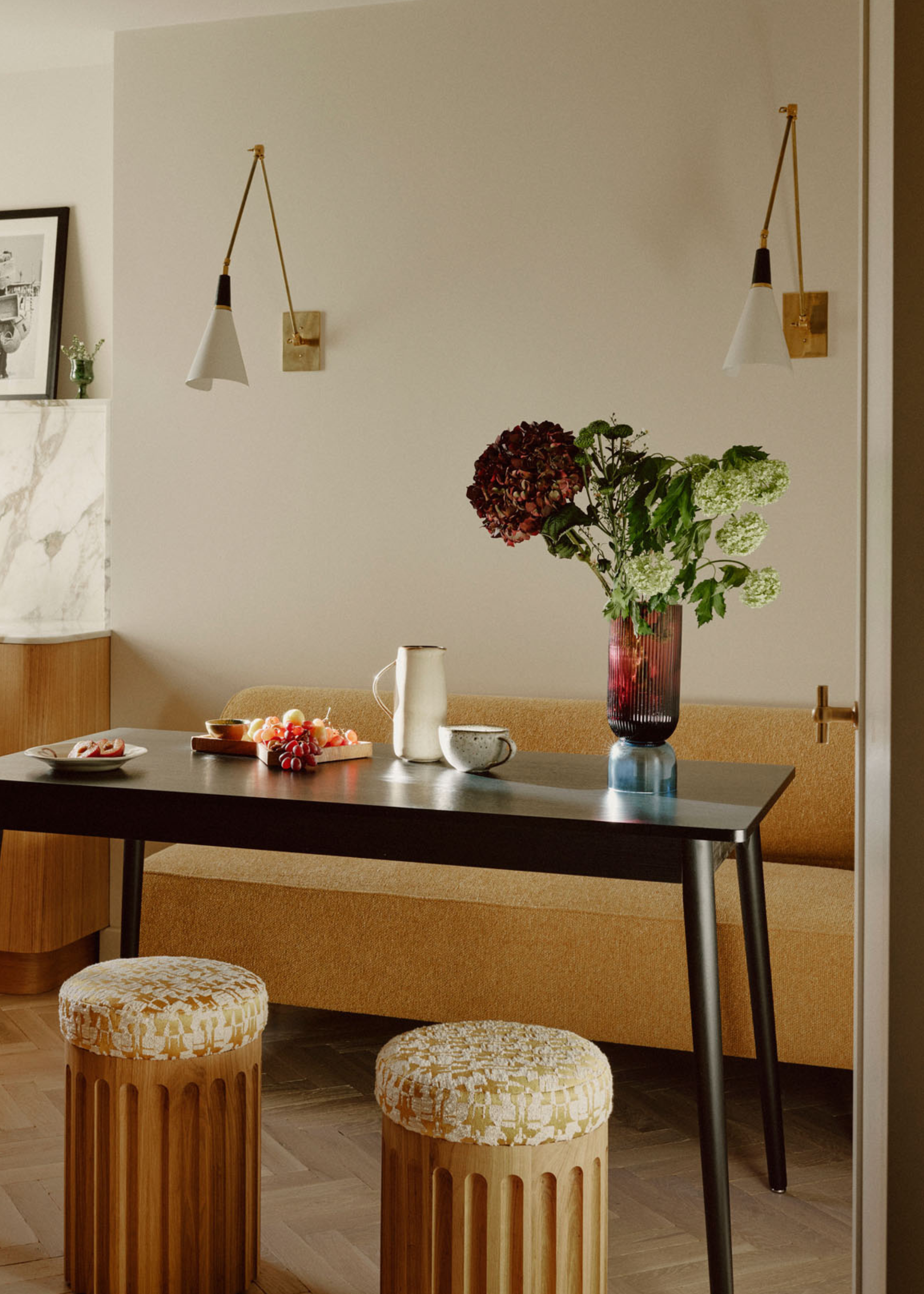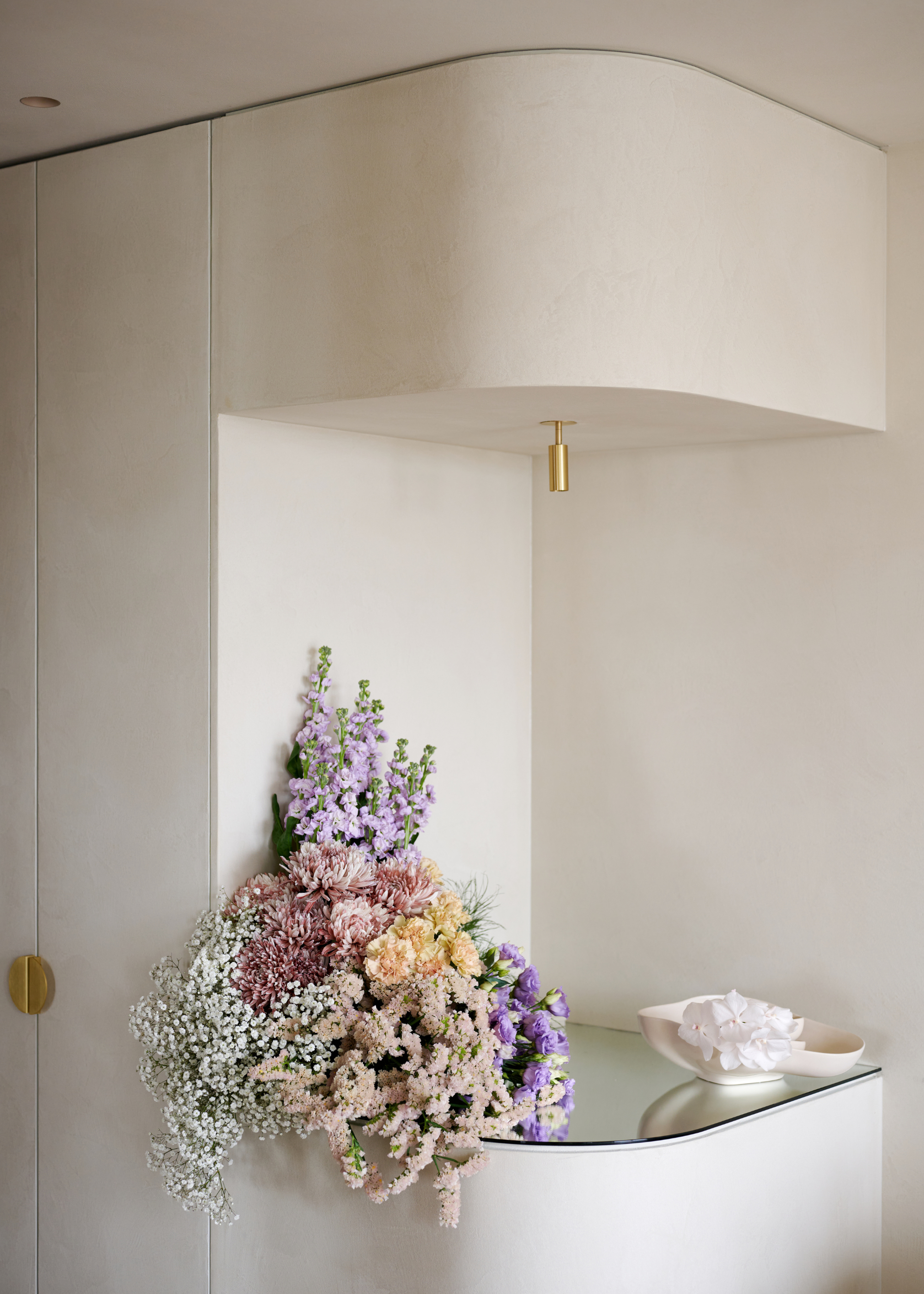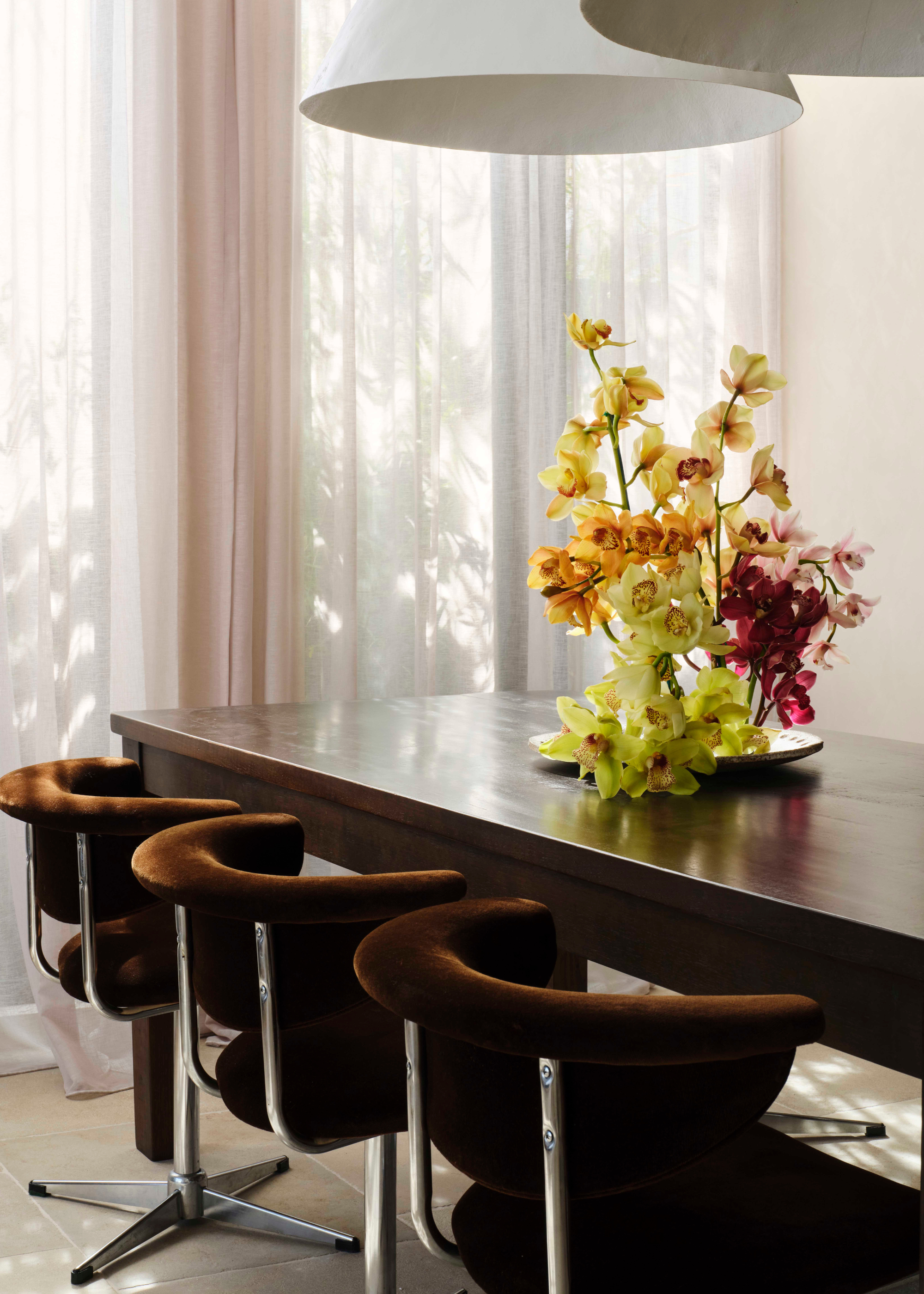
Peonies, tulips, dahlias, buttercups, and beyond. The list of spring flowers I'm keen to experimentally arrange is simply never-ending. But every time I gather my pick of blossoms and a vase to go along, I'm left wondering where to begin.
This cartoon-esque question mark above my head has since been banished, and the reason for it? The 60-30-10 rule. Now, if you're an avid Livingetc reader (you've got taste) or a design enthusiast, you're likely familiar with this color palette ratio.
But you might be wondering what it has to do with floral arrangements, and how? Let's find out.
60-30-10 Rule for Floral Arrangements

Althea Wiles, founder of Rose of Sharon Floral Design Studio, tells me the rule is the secret recipe behind a truly eye-catching arrangement. "Think of it as your roadmap to balance," she says.
"60% of your flowers in your main color, creating that beautiful foundation, 30% in a supporting color that complements and enhances, and that final 10% as your little surprise color that makes the whole arrangement pop and come alive."
Decorating with flowers starts with assembling a bouquet that works with your space, and at the center of this concept is color. So if, like me, you've spent more time picking every flower you like, regardless of their color compatibility, it might be time to rethink your ways — as have I.

Gloria Sims, owner of Florist Empire, also recommends the rule for floral arrangements. "Although applied mainly in interior design, it also works wonders in floral design to please through gentle guidance of the eye," she says.
"This floral arrangement rule will help you curate arrangements that are purposely achieved instead of being overwhelming or time-consuming. This is especially helpful for larger centerpieces or focal installations that need to flow together for cohesion."
Trusted by professional florists and designers alike, this color scheme rule will allow you to immerse yourself in 2025's flower trends with the confidence of a pro. And what will follow is a newfound appreciation for the beauty that is spring flowers.
And It's Not Just About Color

"Another thing to consider for the 60-30-10 rule is that bloom size and texture also play a vital role, not just color," says Gloria. "The dominant color should generally be represented in medium to large flowers to set the base.
"The secondary color should be slightly smaller or looser in texture, while the accent color should come from small yet brilliant flowers or foliage — think hypericum berries, thistles, or colored ribbons and wrappings."
This way, she explains that the arrangements not only achieve harmony with color but are also able to create an interesting scale and texture.
And I have no doubt that if you choose to go the floral route in the way of spring table centerpieces, this simple rule will transform your once beginner-level bouquet into an artful masterpiece that will catch compliments with ease.
Color: Multi
I've been eyeing Late Afternoon's homeware for some time now, but this brilliant Terrazzo Jug from Heal's might just have taken my love for the label to a whole new level.
Color: Green
Speaking of fun vases, this Harlie Brown Studio Green Marble Wiggle Vase from SSENSE borders on chic and fun. Plus, the muted green hues will allow your floral arrangement to be the star of the show.
Color: White
You can't go wrong with a simple accessory, and this Irregular Ceramic Vase from Zara Home is proof. Subtle textures and intentional imperfection in form make this vase a versatile companion to your bouquets.
FAQs
How Many Colors Should you use in Flower Arrangements?
Ideally, as noted by the rule, it's best to limit your color palette for floral arrangements to three hues. However, anywhere between two to five colors can work. Just remember that as your color palette grows, so does room for a busy bouquet that looks a touch out of place.
If you do choose to enlist help from a couple of extra colors, try and find blooms that are within the shade range of your three primary colors. By working with softer hues or darker punches of the same color, you can minimize visual overwhelm.
It's about time you save your coin, embrace the process, and take all the credit for your floral creations. So before your next garden party, venture into your favorite flower store, collect the stems of your choice, and begin what I'm sure will be the start of a hobby you won't want to quit.







